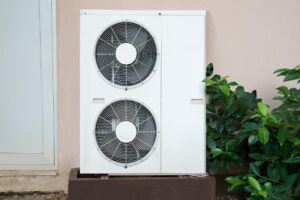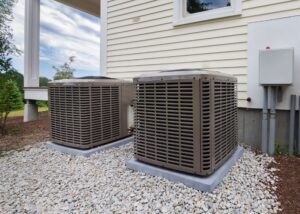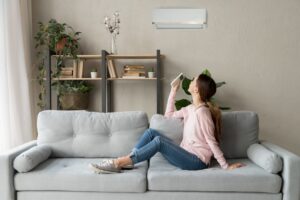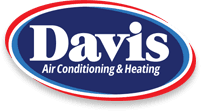Increasing the Value of Your Home
The right improvements can raise the value of your Sugar Land, Texas, home and help you sell faster. You can also enjoy a more comfortable, efficient residence. Many renovations boost your home’s value more than the cost of the improvement, which is how some entrepreneurs make a living by buying, improving, and selling homes. You can increase the value of your home by adding an air purifier and upgrading your HVAC system, landscaping, insulation, thermostat, and ventilation.
Adding an Air Purifier
Air purifiers or air cleaners use filters to remove contaminants like dust, dirt, mold, pollen, and pet dander from your home. Filters with the highest MERV or minimum efficiency reporting value can even capture bacteria and viruses. Air purifiers also make cleaning easier by removing dust and dirt in your home’s air before it settles on floors and furniture. A clean house that looks new is more attractive to buyers.
To raise the value of your home, have an experienced HVAC professional install a whole-home air purifier in your ductwork. That way, you can improve the indoor air quality in your entire home plus fresh, clean air is more welcoming to potential buyers. People can also use a less expensive portable model to make one or two rooms more appealing to guests.
Upgrading Your HVAC System
Most potential buyers want to find a comfortable new home, move in, and enjoy it without having to deal with inconvenient, uncomfortable breakdowns. If your HVAC system is more than 10 years old, replacing it will help you save energy and add value to your home. Ductless, geothermal, and hybrid systems are some of the most efficient. They’re more expensive than conventional systems, but they’re worth the investment because they lower your utility bills and increase your home’s value more than most other models.
A ductless HVAC system has an outdoor unit and one or more indoor units like many other systems, but air travels through a small conduit instead of ductwork. This saves energy and keeps pollutants from building up in ducts and spreading to the rest of your home. Ductless systems also prevent warm or drafty areas, and they’re not as noisy as conventional heaters and air conditioners. Maintenance is less expensive, and they often give homeowners more free closet or attic space. Since ductless systems often have more than one indoor unit, you can also add zoning to avoid heating or cooling unoccupied areas.
A geothermal heat pump extracts heat from the ground or a nearby lake, pond, or well to heat your home in winter. In summer, it cools your home by transferring heat back to the ground or water. Since temperatures stay constant all year just a few feet below the ground, a geothermal system is more efficient than a standard heat pump. Many systems also act as water heaters, so there’s no need for a large, unattractive piece of equipment. Furthermore, if you want luxurious heated floors in your bathroom, have a professional install pipes underneath the floor.
Hybrid HVAC systems use an electric heat pump most of the time and switch to a natural gas or propane furnace during the coldest parts of winter. This means you can save energy and stay comfortable in winter even if one part of the system breaks down.
Improving Your Landscaping
Attractive, energy-efficient landscaping makes your home much more appealing to potential buyers browsing listing photos. It also makes spending time outside with your kids more fun. Plant trees on the west and south sides of your house for extra shade to keep it cool in spring and summer.
Trees that lose their leaves in winter let the sun shine through their branches and heat your home in cold weather, but evergreen trees like pines grow faster. Since they’re larger, more appealing to visitors, and easier to maintain, keep the mature plants that are already in your garden. While you’re waiting for trees to grow, add shrubs and smaller ornamental trees like dogwoods.
For more shade and extra protection from falling twigs, branches, and leaves, install an awning over your air conditioning unit. You can also hide your outdoor unit and protect it from the wind by adding a small fence or a trellis with vines around it. Just make sure it has a couple of feet of free space around it to maximize airflow. A fence around your property or shrubs near your home can give you more protection from the wind. You can also plant two or three rows of dense evergreen trees in a staggered pattern.
A large deck with a nice roof will add shade, give kids a fun, safe place to play, and attract buyers. Since pavement absorbs heat from the sun, you should get rid of sidewalks or driveways made of dark materials like asphalt. Use lighter, more appealing materials like concrete, bricks, or stone tiles instead, and make sure your yard or garden has lots of green space.
Adding Insulation
One of the biggest ways homes waste energy is by letting heated or cooled air escape through holes or cracks in your insulation. Also, many smart buyers look at attics, crawl spaces, and basements carefully before making an offer on a home. Even these unfinished spaces should look clean and new.
Fixing gaps in insulation and removing and replacing moldy or pest-infested areas can make all parts of your home look welcoming. This also keeps potential buyers from running into warm or drafty spots caused by leaks. A good realtor will let people know about the energy savings an insulated home provides.
For more savings, add weatherstripping to doors and windows, including your garage door. Remove and replace any existing weatherstripping that looks cracked or worn. Seal cracks between walls and baseboards or ceilings with caulk. You can also remove your baseboards, place special weatherstripping underneath them, and then replace them.
Installing a Programmable Thermostat
Programmable thermostats look high-tech, attractive, and expensive, so real estate agents should point them out to potential buyers along with good insulation. Many models have color touch screens, but even the pricier versions only cost a few hundred dollars. Some programmable thermostats can set different temperatures for separate areas or zones, keeping every member of the family comfortable.
You can also set your programmable thermostat to raise the temperature in your home in summer when you’re at work or asleep, and then lower it again about half an hour before you wake up or come home. That way, you can save money and stay comfortable. Many models will let you program a different schedule for every day of the week, and some can monitor your home’s humidity and remind you to change your HVAC system’s air filter. You can even control many programmable thermostats through your smartphone or computer.
Updating Your Ventilation
Unfortunately, homes with good insulation tend to have poor ventilation. If some of your indoor air can’t escape, pollutants will continue to increase. To solve this problem and make sure the air in your home feels fresh and healthy, have a whole-home ventilator installed in your ductwork. Like whole-home air purifiers, whole-home ventilators work on your entire residence to remove stale air and replace it with fresh air.
Most models are energy recovery ventilators or ERVs, and they work like heat pumps to transfer heat to or from fresh air before it comes into your house. That way, you can save energy and stay comfortable. Most ventilators also filter fresh air before it circulates in your home.
You should also install exhaust fans in your kitchen and bathroom to get rid of cooking smoke, bad smells, and humid air. This prevents stains on the ceiling and reduces mold growth, which becomes worse in moist environments. It also makes your home more comfortable after you take a hot shower or try a new recipe that doesn’t turn out well.
Davis Air Conditioning and Heating has over 45 years of HVAC experience, and we can help you install, maintain, and repair a variety of HVAC systems and equipment to increase the value of your home. Call us anytime at 888-710-5530 for excellent service.
Image provided by Shutterstock
You May Also Like

6 Mistakes To Avoid With Your Heat Pump in Pasadena, TX
Heat pumps offer an efficient way to keep your Pasadena, TX home comfortable. However, you’ll only get the most out of yours… Continue Reading 6 Mistakes To Avoid With Your Heat Pump in Pasadena, TX…

Why Is Hot Air Coming From My AC in Webster, TX?
The purpose of your air conditioner is to keep your Webster, TX home cool throughout the warmer months. Therefore, if your system… Continue Reading Why Is Hot Air Coming From My AC in Webster, TX?…

Don’t Ever Ignore These 4 Ductless Noises in Fresno, TX
You probably get used to the sounds your Fresno, TX ductless air conditioning system makes and know what’s normal and what’s not.… Continue Reading Don’t Ever Ignore These 4 Ductless Noises in Fresno, TX…
